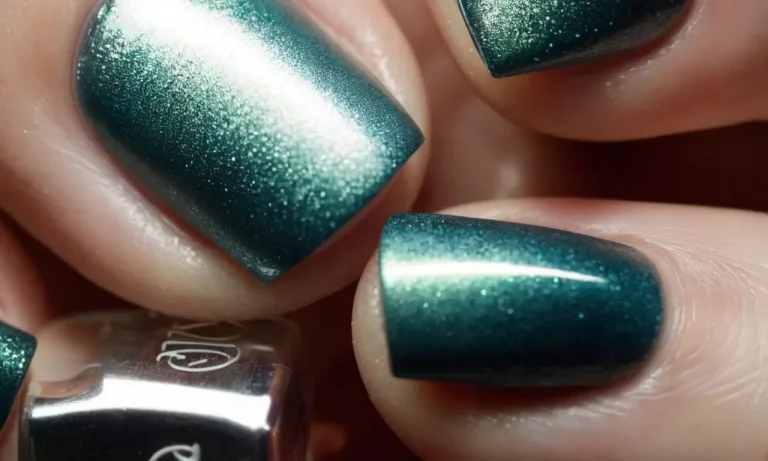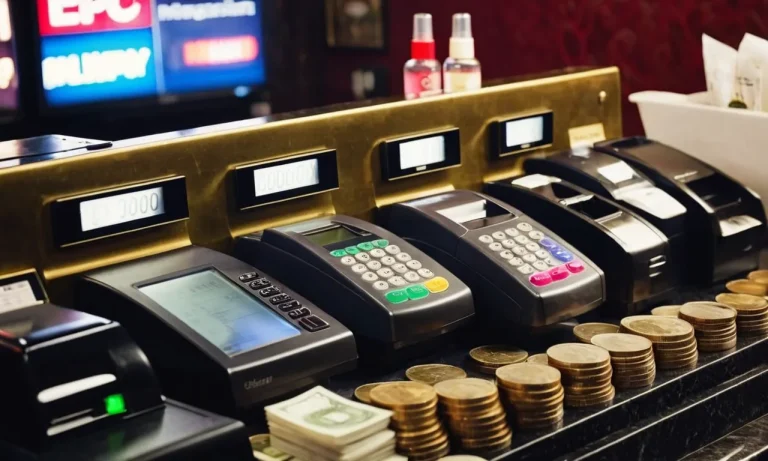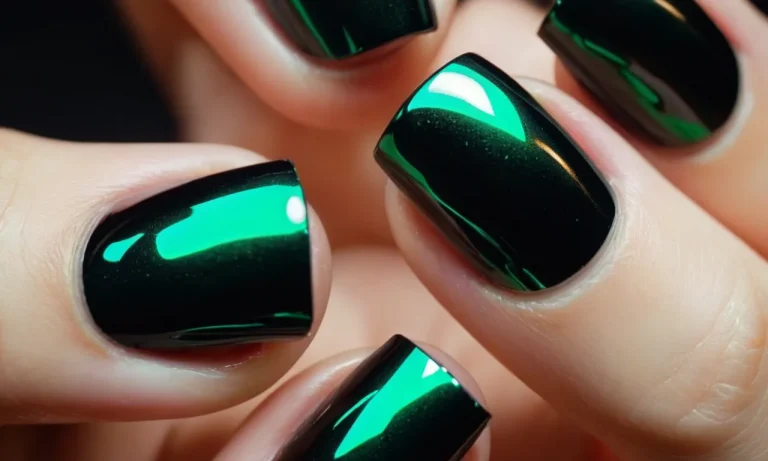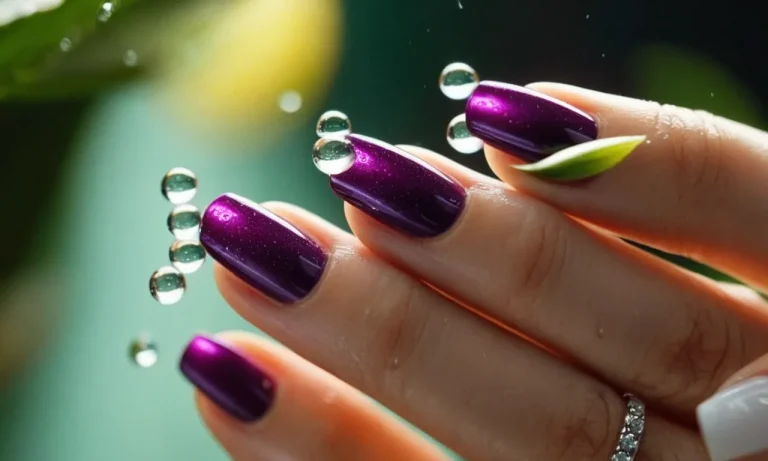How To Take Off Glue On Nails: A Step-By-Step Guide
Getting glue on nails can be annoying and even painful. If you’ve ever dealt with pesky glue residue stuck under your nails, you know how frustrating it can be. Luckily, removing glue from nails is possible with a few simple techniques and products.
If you’re short on time, here’s a quick answer to removing glue from nails: soak nails in acetone or nail polish remover for 5-10 minutes then gently scrape away glue with a wooden cuticle pusher, orange stick, or toothpick.
Rubbing alcohol, vegetable oil, or petroleum jelly can also help break down glue.
What Causes Glue on Nails
Using nail glue for false nails
Getting nail glue on your natural nails is a common issue when using false nail tips or press-on nails. Nail glue is formulated to bond falsies to your real nails, so spills and messes can happen easily. When applying glue, it’s hard to control the amount that comes out of the tube.
Too much glue can squeeze out the sides or get on your cuticles and real nails (🙈). The struggle is real! This strong adhesive is meant to last 2-3 weeks, so cleaning up spills quickly is important to avoid damage.
Another cause of nail glue stains is when old falsies or tips start to lift or pop off. As the bond weakens over time, glue can leak out and get on the natural nail plate. This often happens if you go too long between fill-ins or use a low-quality nail adhesive.
Preventing lifts and properly removing falsies when they do happen will help minimize this issue.
Getting super glue or craft glue on nails
Super glue and other instant adhesives are useful around the house but can wreak havoc on your manicure. These strong glues bond skin and nails immediately, causing stubborn staining. You may end up with glue stuck to your nails if the bottle drips while you’re using it, or if you accidentally touch the wet adhesive.
This type of glue is common in crafting as well. If you’re doing DIY projects, you’ll want to protect your hands and nails from potential spills.
Children and teens may also get craft glue, like Elmer’s glue, on their nails while doing school projects or art activities. This kid-safe adhesive washes off more easily than super glue. But dried glue can still cling to nails and cuticles, leaving a bumpy or flaky mess.
Having remover wipes or oil on hand is wise to tackle classroom glue spills quickly.
Spills from wood glues or household adhesives
Wood glues, construction adhesives, and other household glues contain extremely strong bonding agents. Drips and spills from these products can be challenging to remove from fingernails and skin. Epoxy, wood filler, tile mortar, and wallpaper adhesive are just a few examples.
Read labels carefully and wear gloves when using these types of glue to avoid accidents.
Spillage often occurs when opening containers or dispensing large quantities. Caps and nozzles can leak, especially with thick or dried-out glue. Any sticky surfaces will grab onto nails instantly. Bonding strength varies based on the formula, but all can cause short-term or lasting damage if not dealt with promptly.
Supplies Needed for Removing Glue from Nails
Acetone or nail polish remover
Acetone is the most common and effective ingredient used to break down nail glue. You’ll need a bottle of 100% pure acetone, which can be found at any drugstore or beauty supply retailer. Some popular brands are Sally Hansen and Onyx Professional.
Make sure to avoid acetone-free nail polish removers, as they won’t be strong enough to dissolve the nail glue. Acetone is the safest and quickest way to remove dried glue from your nails.
Cuticle pushers and orange sticks
You’ll need a few tools to help scrape off glue residue after soaking your nails in acetone. Cuticle pushers and orange sticks are perfect for gently scraping off any remaining glue on the nail plate or around the cuticles and sidewalls.
You can find these inexpensive tools at drugstores, beauty supply stores, or online retailers like Amazon. Using a gentle scraping motion will help remove any stubborn glue without damaging the natural nail.
Toothpicks
Toothpicks are another handy tool for removing nail glue in small, precise areas like around the cuticles. After soaking in acetone, use a toothpick to gently scrape away any glue left around the sidewalls or cuticles of the nails. The pointed tip allows you to target tiny areas.
Toothpicks can be found at any grocery store or convenience store.
Cotton pads and balls
You’ll need something to apply the acetone with, so have cotton balls or cotton pads on hand. Cotton allows the acetone to saturate the nail plate. Simple cotton balls or rounds work perfectly. You may also want to use a finer-tip cotton swab for small areas.
Make sure you have enough cotton on hand for each finger.
Foil
For a more intense acetone treatment, you can wrap each finger with aluminum foil. This helps contain the acetone against the nail plate to break down glue faster. You can find foil at any grocery store. Tear off pieces about 6-8 inches long to fully wrap around each finger.
Bowl
Finally, you’ll need a small bowl or dish to pour some acetone into for easy soaking access. Any small ceramic, glass or plastic bowl will work. Use one large enough to fit your fingertips into. Prepare the bowl with enough acetone to submerge the nails.
Step-By-Step Method for Taking Glue Off Nails
Step 1: Soak nails in remover
The first step is to soak your nails in a nail glue remover solution. This will help soften and break down the glue. Fill a small bowl or cup with pure acetone nail polish remover. For best results, use an acetone-based remover as this will dissolve the glue quickly and efficiently.
Avoid using non-acetone removers as these may not work as well. Submerge your nails in the bowl and let them soak for 10-15 minutes. The glue should start loosening and breaking down. Be patient during this process and resist peeling or picking at the glue prematurely.
Step 2: Gently scrape away glue
After soaking, the glue should be softened enough to gently scrape off. Start scraping at the edge of the nail gently with a wooden cuticle pusher, plastic scraper or old credit card. Take your time and be careful not to scrape too hard or dig into the natural nail.
The glue should begin to roll off the nail in pieces as you scrape. Focus on removing one nail at a time. If you find pieces of stubborn glue remaining after scraping, you may need to do another short soak of 5-10 minutes for those nails before scraping again.
Step 3: Use rubbing alcohol to finish cleaning
After removing the softened glue, swipe the nail beds with a cotton pad or cotton swab soaked in rubbing alcohol. This will remove any remaining residue or stickiness left behind from the glue remover. Rubbing alcohol works well to sanitize the nails.
Be gentle as you swipe, especially around the cuticles and avoid getting rubbing alcohol inside the nail folds, as this can dry out the skin. The rubbing alcohol should easily wipe away any last traces of glue or product.
Step 4: Moisturize nails and cuticles
The last step is to moisturize the nails and cuticles after all the scrubbing and soaking. The remover and rubbing alcohol can cause dryness. Apply a hydrating nail oil, butter or cream and gently massage into the nails beds and cuticles. This helps replenish moisture and prevent brittle, flaky nails.
Regular moisturizing after glue removal keeps the nails healthy. For added moisture, apply a thick hand cream followed by wearing cotton gloves overnight.
With some simple soaking, scraping and cleaning, you can easily remove stubborn nail glue residue at home. Just be patient during the process and take care around the delicate nail beds. Following these steps can get rid of glue without damaging the natural nails.
Remember to always moisturize after to keep your nails strong and supple.
Tips and Remedies for Stubborn Glue
Use petroleum jelly or vegetable oil
Petroleum jelly or vegetable oils like olive oil can help loosen glueresidue on nails. Apply a thick layer to nails, let it soak for 5-10 minutes, then gently scrape residue off with a toothpick or orange stick. The oil helps break down the glue.
Anecdotal evidence shows this method works well for many. Just be patient and persistent.
Try soaking in warm water
Fill a bowl with warm water, then soak nails for 10-15 minutes. This helps soften the glue, making it easier to remove. Gently scrape softened glue off with a toothpick, being careful not to damage nails. For extra softening power, add a spoonful of baking soda or oil to the water.
According to nail care experts, this simple soak works wonders.
Alternate acetone and foil wraps
For stubborn glue residue, try alternating acetone and foil wraps:
- Soak a cotton ball with 100% acetone nail polish remover and hold on nail for 1-2 minutes
- Wrap nail in a small piece of aluminum foil and leave on for 5-10 minutes
- Remove foil, wipe away residue, and repeat process if needed
The acetone helps break down glue while the foil wrap locks in the acetone to boost its softening effects. Be very careful handling acetone and supervise young children using this method.
See a professional for deep glue penetration
If glue has bonded deep into nails and cuticles, seeing a professional manicurist may be safest. They have specialized tools and expertise to remove stubborn glue while minimizing nail damage. Prices vary, but generally range $10-$30. Protect nails afterwards with nourishing cuticle oil.
| Method | Time Needed | Difficulty |
|---|---|---|
| Petroleum jelly/oil | 10-15 minutes | Easy |
| Warm water soak | 15-20 minutes | Easy |
| Acetone & foil wraps | 30+ minutes | Moderate |
| Professional removal | Varies | Expert |
With some patience, home remedies can remove pesky nail glue. But if you damage nails or skin, see a doctor. For safe glue removal tips, visit reputable sites like WebMD or Healthline.
Preventing Future Glue Mishaps
Be careful when using nail glue
Nail glue can be tricky to work with, so it’s important to use care when applying it to avoid making a mess. Here are some tips:
- Apply glue sparingly and only to the false nail, not your actual nail. Just a small drop is enough.
- Allow the glue to get tacky before pressing the false nail in place. This prevents it from getting squeezed out the sides.
- Once the false nail is on, do not slide it around or you may unintentionally get glue on your skin. Press straight down firmly.
- Clean up any excess glue immediately with an acetone-soaked cotton swab before it dries. This prevents buildup.
- When done, wash hands thoroughly to remove any remaining residue.
Following these simple precautions when gluing on fake nails can help avoid messy mishaps. Taking your time and using care is key.
Consider nail glue alternatives
Standard nail glue contains strong chemicals that can damage nails over time with repeated use. Consider switching to gentler glue alternatives:
- Water-based nail glues – These create a weaker bond than chemical glues but are less harsh on natural nails.
- Double-sided nail tabs – These tiny adhesive tabs stick to the false nail on one side and your real nail on the other without glue.
- Magnetic false nails – These contain micro-magnets that allow them to connect to your real nail.
While the hold may not last as long, these options reduce the risk of glue-related accidents. They also allow easier nail removal without heavy acetone exposure.
Apply petroleum jelly around nails first
Before gluing on fake nails, coat skin around the nails with petroleum jelly. This creates a protective barrier to keep glue from sticking to fingers and causing skin irritation or even tearing off bits of skin when removing nails.
An especially helpful product for this is Orly’s Bonder Rubberized Basecoat. It leaves a thick, rubbery film that glue won’t permeate. Follow package directions, applying it liberally around the entire nail and allowing it to dry before adding any glue.
| Without Nail Glue Barrier | With Petroleum Jelly Barrier |
|---|---|
| Glue can stick directly to skin, causing redness, stinging pain, skin tears during removal. | Glue only adheres to false nail, protects skin to prevent discomfort and damage. |
Using a protective glue barrier is an easy way to avoid many issues caused by glue making contact with skin around the nails. This simple step can prevent 90% of nail glue frustrations for a smoother application and removal process.
Conclusion
Removing dried glue from nails is possible with some tried and true removers and methods. Soak nails in acetone, gently pry up glue with wooden tools, and moisturize after to restore nail health. For really stubborn glue, enlist petroleum jelly or alternate soaking and foil wraps.
With the right products and techniques, you can get pesky glue off your nails quickly and painlessly. Just be patient and gentle during the process. And going forward, take precautions when working with adhesives to prevent another sticky nail situation.







